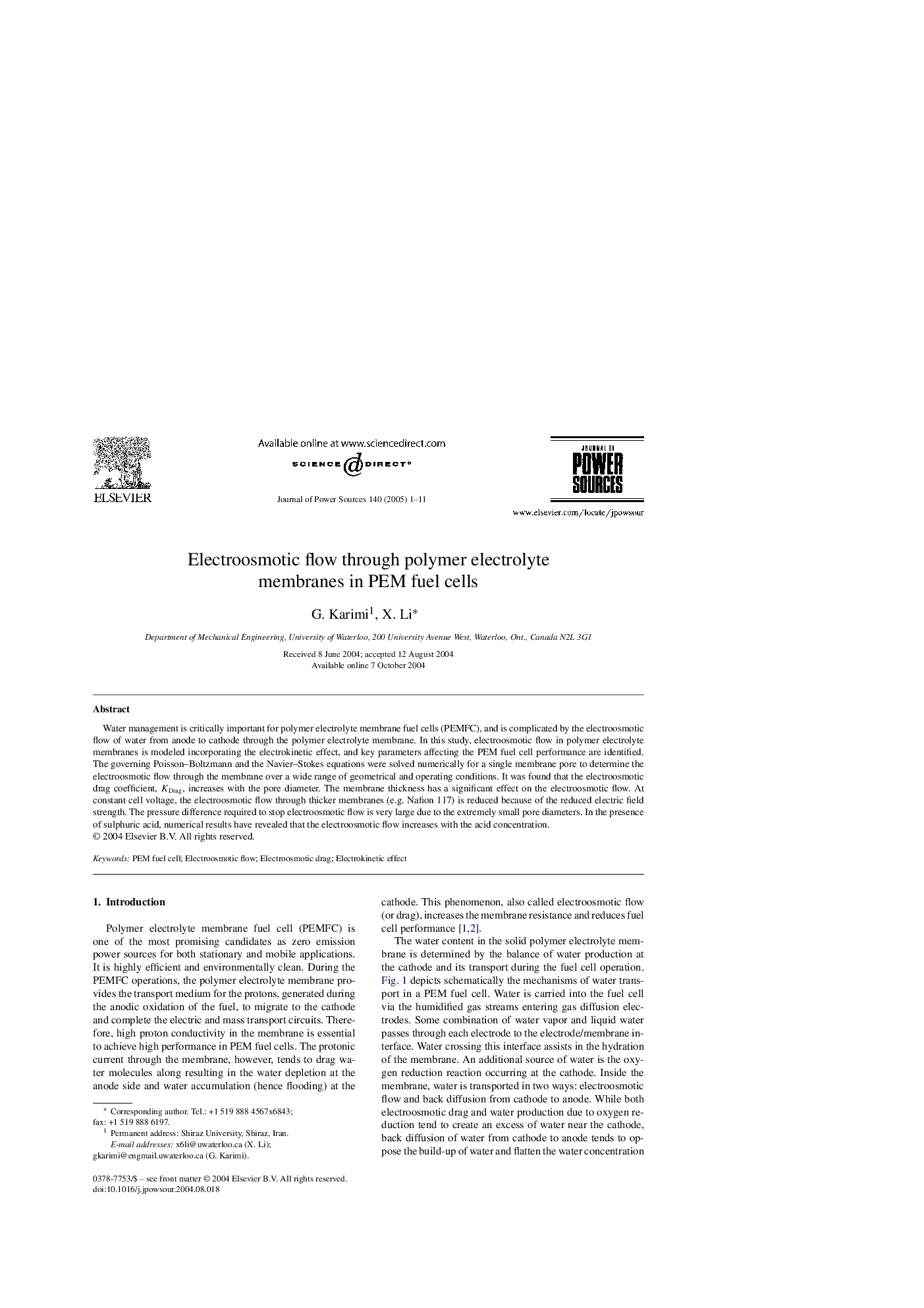| Article ID | Journal | Published Year | Pages | File Type |
|---|---|---|---|---|
| 10568434 | Journal of Power Sources | 2005 | 11 Pages |
Abstract
Water management is critically important for polymer electrolyte membrane fuel cells (PEMFC), and is complicated by the electroosmotic flow of water from anode to cathode through the polymer electrolyte membrane. In this study, electroosmotic flow in polymer electrolyte membranes is modeled incorporating the electrokinetic effect, and key parameters affecting the PEM fuel cell performance are identified. The governing Poisson-Boltzmann and the Navier-Stokes equations were solved numerically for a single membrane pore to determine the electroosmotic flow through the membrane over a wide range of geometrical and operating conditions. It was found that the electroosmotic drag coefficient, KDrag, increases with the pore diameter. The membrane thickness has a significant effect on the electroosmotic flow. At constant cell voltage, the electroosmotic flow through thicker membranes (e.g. Nafion 117) is reduced because of the reduced electric field strength. The pressure difference required to stop electroosmotic flow is very large due to the extremely small pore diameters. In the presence of sulphuric acid, numerical results have revealed that the electroosmotic flow increases with the acid concentration.
Related Topics
Physical Sciences and Engineering
Chemistry
Electrochemistry
Authors
G. Karimi, X. Li,
